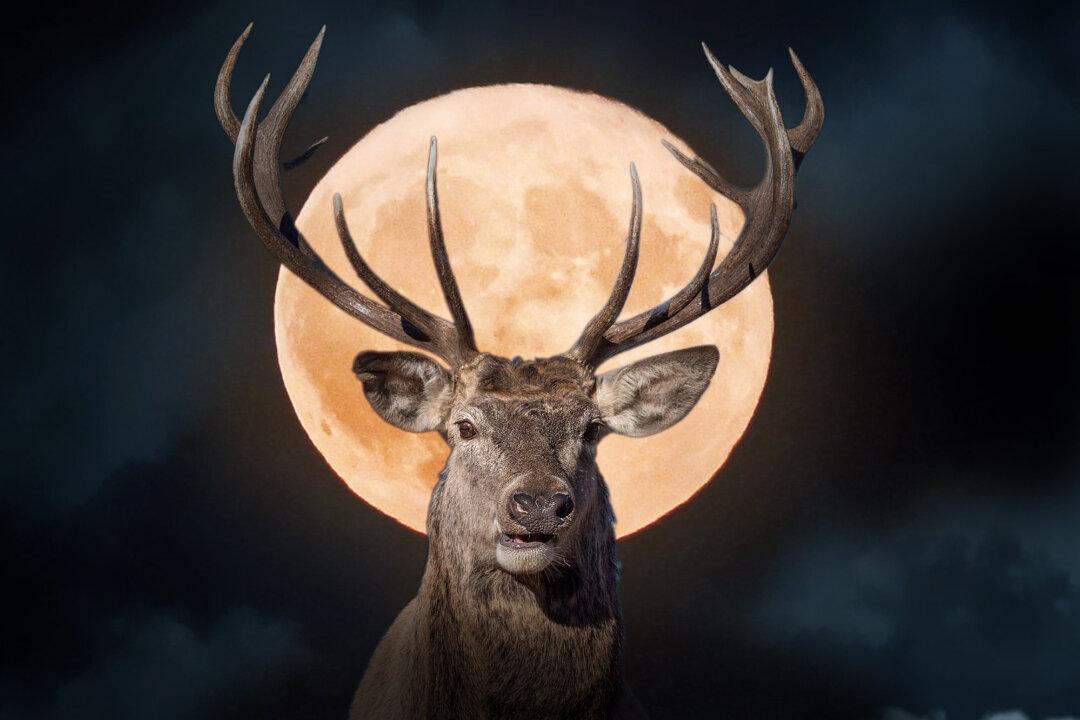In summer, these glorious animal appendages grow like nobody’s business. So much so, they even have their own monuments. Whether adorning a Roman moon goddess in the Louvre or simply a 14,000-pound pile of them in a town square in Wyoming, it’s undeniable: we love buck antlers. We have even named a moon after them.
The full Buck Moon is so-called because its month, July, is notably when male deer (bucks) begin to spectacularly increase the size of their antlers—which are not horns but the fastest-growing bones known to humans—at a blistering rate of 1/4 to 1 inch per day, gaining as much as a pound of weight every 24 hours. They are covered with an exquisite velvet that gets rubbed off and are used to attract mates and fight off challengers.






